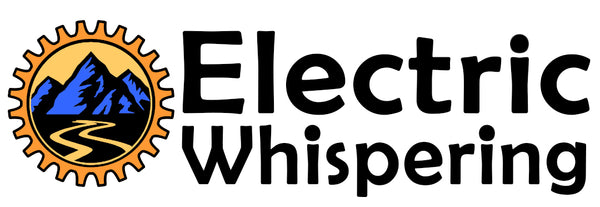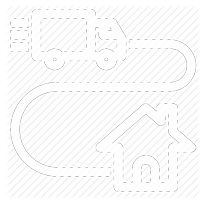Which Type of Electric Bike Is Right for You? A Simple Guide for First-Time Buyers
Electric bikes are more popular than ever, and for good reason. They’re efficient, eco-friendly, and surprisingly fun. But if you’re new to the world of e-bikes, choosing the right one can feel overwhelming. With so many models, features, and price points to consider, where do you start?
This guide is here to help. Whether you’re looking to commute, explore trails, or simply enjoy a smoother ride around town, we’ll walk you through the key types of electric bikes and how to pick the one that fits your lifestyle best.
1. Understanding the Basics: What Is an Electric Bike?
An electric bike, or e-bike, is a bicycle equipped with an electric motor and battery that assist you while you pedal. Most models offer different levels of pedal-assist and sometimes a throttle-only mode, allowing you to adjust how much effort you put in.
E-bikes don’t replace biking—they enhance it. They make uphill climbs easier, extend your range, and open up cycling to people who might not otherwise ride due to fitness, distance, or age. E-bikes are not motorcycles; you still pedal, but the assist helps you go farther and faster with less effort.
2. Key Categories of Electric Bikes
There are several types of e-bikes, each designed with a specific purpose in mind. Here's a breakdown of the most common categories to help you find your match:
Commuter E-Bikes
Designed for daily travel, commuter e-bikes often feature:
-
Slimmer tires for road efficiency
-
Comfortable upright seating
-
Integrated lights and racks
-
Step-through frame options for easy mounting
These are perfect if you want to ride to work, run errands, or cruise city streets.
Fat Tire E-Bikes
Equipped with 4” wide tires, these bikes provide:
-
Enhanced traction on snow, sand, and gravel
-
A stable and cushioned ride
-
Strong motors for off-road capability
Ideal for riders who want adventure and versatility, fat tire bikes perform well on rough terrain but also handle pavement with ease.
Folding E-Bikes
Compact and convenient, these bikes:
-
Fold up for easy storage
-
Fit in car trunks or RVs
-
Often feature smaller wheels (20” or less)
They’re a great choice for apartment dwellers, travelers, or anyone with limited storage space.
Cargo E-Bikes
Built to carry heavy loads, cargo bikes include:
-
Extended rear racks or front-loading platforms
-
High weight capacity
-
Sturdy frames and brakes
If you’re transporting kids, groceries, or equipment, this type is made for you.
Mountain E-Bikes (eMTBs)
Designed for trail riding, these bikes feature:
-
Front or full suspension
-
Knobby tires for grip
-
High-torque motors
They’re best for those seeking thrills off-road and serious climbing power.
3. How to Choose Based on Your Riding Needs
Choosing the right type of e-bike starts with identifying how and where you’ll ride most often. Ask yourself:
-
Do you need it for daily commuting?
→ A commuter or city e-bike will give you comfort, lights, and racks for bags or gear. -
Want to explore trails or rough terrain?
→ Fat tire or mountain e-bikes are built to handle it. -
Need something you can store in a small space?
→ A folding e-bike is compact and practical. -
Riding with children or carrying cargo?
→ Cargo bikes give you the load capacity and stability you need. -
Just getting back into riding and want something easy?
→ A step-through city e-bike offers ease of use, especially for seniors or those with limited mobility.
The key is to match the bike to your real-world routine. A flashy mountain bike may look great, but if you're just commuting on flat roads, it might not be the best fit.
4. Important Features to Consider
Beyond the bike type, there are several features that first-time buyers should understand:
Motor Power
Most motors range from 250W to 1000W or more. Higher wattage means more climbing and speed power. For everyday use, 500W to 750W is usually sufficient.
Battery Capacity
Measured in watt-hours (Wh), the higher the number, the longer the range. A 48V 15Ah battery (720Wh) typically offers 25–50 miles per charge, depending on how much assist you use.
Pedal Assist vs. Throttle
-
Pedal Assist: The motor helps as you pedal. More natural feel.
-
Throttle: No pedaling required. Just twist or press to go. Great for quick boosts or people with limited mobility.
Brakes
-
Mechanical Disc Brakes: Reliable, lower cost.
-
Hydraulic Disc Brakes: Stronger stopping power and smoother performance, especially on heavier bikes.
Tires
-
Fat Tires: For comfort, off-road grip, and all-season riding.
-
Standard Tires: Better for paved roads and longer ranges.
Suspension
-
Front Suspension Forks absorb shocks from rough roads or trails.
-
Full Suspension is best for aggressive off-road riding.
5. Cost Breakdown: What to Expect
Electric bike pricing varies widely depending on features, brand, and build quality:
-
Budget Range ($1,000–$1,500):
Basic motors and batteries, often commuter or folding models. -
Mid-Range ($1,500–$2,500):
Stronger motors, longer battery life, fat tires, and better suspension. Great value for most riders. -
Premium ($2,500+):
High-performance components, advanced displays, hydraulic brakes, and specialty designs like cargo or full-suspension eMTBs.
Remember, an e-bike is an investment—compare it to the ongoing costs of gas, parking, and maintenance for a car. Many buyers save money over time.
6. Common Mistakes First-Time Buyers Make
Avoid these pitfalls when buying your first e-bike:
-
Choosing style over function: It’s tempting to go with what looks cool, but always prioritize what fits your riding needs.
-
Underestimating battery range: Always look at watt-hours, not just volts or amp-hours.
-
Not checking local regulations: Some areas have speed or motor limits for e-bikes. Make sure your chosen model is compliant.
-
Buying without a warranty or support: Choose sellers that offer clear support, return policies, and warranty coverage.
7. Shop With Confidence: What to Look for in a Retailer
When buying online or in-store, make sure your e-bike retailer offers:
-
Clear product specs
-
Free shipping or delivery
-
Warranty details (1 year or more)
-
Accessible customer support (phone, chat, or email)
-
Financing options like Shop Pay Installments
A trustworthy seller will also have real customer reviews, professional product images, and honest service promises.
8. Test Ride Tips & Questions to Ask
If possible, test ride a few e-bikes before making a decision. During your ride, pay attention to:
-
How responsive the motor feels
-
The comfort of the seat and handlebar height
-
Braking power
-
Noise level
-
Ease of mounting (especially for step-through frames)
Ask the seller:
-
How long does the battery take to charge?
-
What’s the warranty on the battery and motor?
-
Can replacement parts be ordered easily?
9. Final Thoughts: Matching the Right E-Bike to Your Lifestyle
The best electric bike for you isn’t the most powerful or the most expensive—it’s the one that fits your everyday life. Whether you’re replacing your car, seeking weekend adventures, or just want a little extra boost on the road, there’s an e-bike for you.
By understanding the types available and matching them to your needs, you’ll not only make a smart purchase—you’ll enjoy riding more and use it often.
Ready to Ride?
Explore our curated collection of top-rated electric bikes. We offer free shipping, financing options, and expert support to help you choose the perfect ride.





